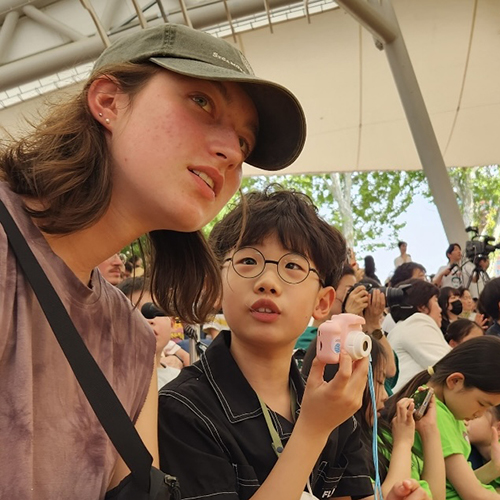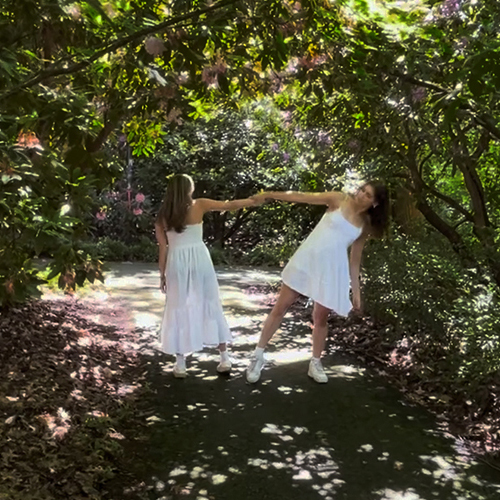How’s this for a course assignment: fall in love with a novel and three poems.
The assignment hints at what’s to come in Writers on Writing, a course offered by the Creative Writing Program in the Department of English. The course includes lectures by nearly two dozen poets and novelists and encourages students to try their hand at writing.
“The idea that literature is a joy is sometimes forgotten,” says Richard Kenney, professor of creative writing, who designed and coordinates the course. “The goal of the class is to bring infectious literate passion back within earshot of as many people as possible.”

The UW has a nationally renowned Creative Writing Program, with four MacArthur Fellows and the winner of the National Book Award among its current and emeritus faculty. But only a select few students have the opportunity to study with these renowned professors, who mostly teach small seminar courses.
Writers on Writing is intended for everyone else. The course, introduced last year, will be offered again Winter Quarter 2010. Two lectures are presented each week, always with a different writer at the podium. Half the speakers are Creative Writing faculty; the rest are emerging writers from the local community. They read from their work and discuss some aspect of their writing, with considerable leeway in content and approach.
“I ask them to talk about the most important thing they know, or the thing they’re most interested in right now,” says Kenney. “They speak very affectingly about what they are doing. And having to respond to the question, ‘What is important to you?’ has been a tonic for all of us in the Creative Writing Program. It’s bracing.”
In addition to hearing from writers, students have weekly creative writing assignments. The assignments might be intimidating if students had time to ruminate about them—but they don’t. An assignment, or “pitch” as Kenney calls it, is presented at the end of one lecture each week and must be handed in (electronically) by midnight the same day, to be discussed in the discussion sections that follow.
“The pitch has nothing to do with producing a polished literary piece,” says Kenney. “It has everything to do with testing an imaginative idea. We want students to write quickly and not worry about where to put semicolons.”

Pitch topics run the gamut. One week, students might be asked to reword a parable or proverb—an assignment that reveals the importance of word selection and word order to meaning. Another week, students might be asked to adapt a portion of a book into a screenplay scene.
“There’s a lot of freedom in the time constraint,” says Sarah Erickson, a graduate student in creative writing and a Writers on Writing teaching assistant (TA). “Students realize their writing doesn’t have to be perfect. At first there can be resistance, but after a while they see the plus side of it, of just giving it a shot. It’s actually very low risk.”
Along with the weekly pitches, there’s that overarching assignment to fall in love with at least one novel and three poems during the quarter. Students are required to recite their poems in their discussion section, and they must prove their love of the novel in a one-on-one interview with a TA. A list of “certifiably lovable” novels and poets, recommended by faculty, are provided at the start of the quarter.
For English majors and creative writing students—about half of the class’s 100 students—falling in love with a book or poem might be business as usual. But for those with majors ranging from engineering to history to economics, it might be their first time really exploring a poem or being asked to love a novel. Whatever their background, students have risen to the challenge.
“What’s been so amazing is the students’ genuine enthusiasm” says Erickson. “English majors, biology majors… it’s great to see the high interest no matter where students are coming from. There’s this sense of everyone being welcome. People are so engaged.”
Best of all, that enthusiasm endures. William Camponovo, TA for an Introduction to Verse course, led a discussion section in which about one third of the students had previously taken Writers on Writing. In an email to Kenney, he shared his observation that those students were particularly “thoughtful, ambitious, talkative and—above all, yes!—enthusiastic for whatever I threw at them. …I even have to confess I was unprepared for the depth and difficulty of the ideas they were willing to tackle. Writers on Writing, it seems to me, is an amazing asset for our department.”
Camponovo’s observation confirms what Kenney believed when he created the course. Students, once exposed to great writers and great writing, will want more. “I would take [it] over and over again if I could,” enthused one student in the end-of-course evaluation. “[It’s] my favorite at UW so far. …Brilliant.”
Curious which books the creative writing faculty suggested as “certifiably lovable”? Click here to see the list provided to students.
More Stories

Democracy by the Numbers
Mathematics and Democracy, an undergraduate mathematics course, explores the role of math in many aspects of democracy, from elections to proportional representation.

Finding Family in Korea Through Language & Plants
Through her love of languages and plants — and some serendipity — UW junior Katie Ruesink connected with a Korean family while studying in Seoul.

Dancing Across Campus
For the dance course "Activating Space," students danced in public spaces across the University of Washington's Seattle campus this spring.